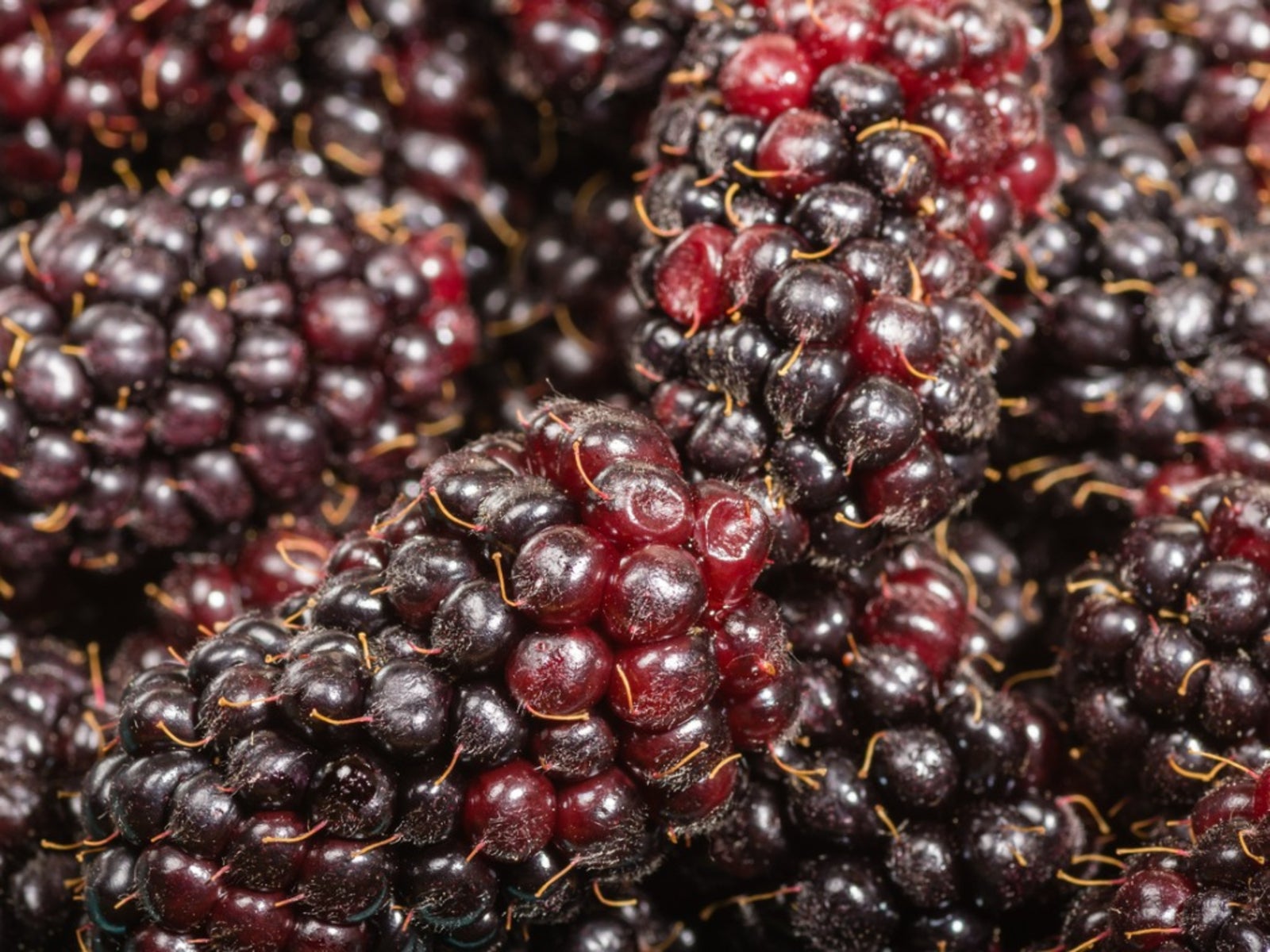What Are Marionberries: Learn About Marionberry Growing And Care

Marion blackberries, sometimes referred to as the “Cabernet of Blackberries,” are the premier blackberry cultivated and used in everything from yogurt, jam, baked goods, and juices. They have a complex, rich flavor, deep reddish-purple color, superior texture and size over other blackberry varietals, and that's not all. Read on for further information regarding, “What are marionberries?”.
What are Marionberries?
Marionberry plants are crossbreeds made up of two previous hybrids -- the small but delicious Chehalem and the larger heavily productive Ollalie. Development of this berry began in 1945 through the efforts of George F. Waldo of the U.S. Department of Agriculture and was tested in the Willamette Valley. Subsequently released for cultivation under its name of Marionberry in 1956, it is named after Marion County in Oregon.
Additional Marionberry Information
Marionberries are called caneberries, meaning a type of blackberry with a limited number of long (up to 20 feet (6 m.)), but prolific in production canes. This vigorous grower can produce up to 6 tons (5443 kg.) of fruit per acre. The Willamette Valley in Oregon is the Caneberry Capital of the World with perfect climatic conditions for marionberry growing. Marionberry growing conditions are optimal with moist spring rains and summers, which are warm during the day and cool at night to produce sweet, plump fruit. 90 percent of the world's marionberries are grown near Salem, Oregon. The hybrid captures the very best of the two crossed varieties with an intense berry flavor, plump juiciness, and high levels of Vitamin C, gallic acid, and rutin - antioxidants that are purported to be cancer fighters and aid in circulation. Other health benefits include the berries' high fiber content and low-calorie count, just 65-80 calories per cup! Additionally, the berries of marionberry plants freeze beautifully and, when thawed, maintain their shape and texture.
How to Grow Marionberries
I've got you now. I know you are chompin' at the bit to know how to grow your own marionberries. First of all, marionberries ripen through spring and early summer, reaching peak production during July and ending in early August. The berries must be hand-picked, ideally in early in the morning. Choose a full sun exposure site for growing marionberries. The soil should have a pH of 5.5 or greater; if it is less than this you need to then amend it with lime. Dig in 4-5 inches (10-12.5 cm.) of good compost or manure into the top foot (30.5 cm.) of the soil the autumn prior to planting. Plant the marionberry in the early spring, to an inch (2.5 cm.) up from the base but not covering the crown of the plant. Tamp the soil around the plant firmly and water it in well. Multiple plants should be 5-6 feet (1.5 to 2 m.) apart and rows around them 8-10 feet (2.5 to 3 m.) apart. The marionberry plant should be supported with stakes and wire trellises with each pair of stakes positioned 4-5 feet (1 to 1.5 m.) apart with 2 wires strung between. One wire should hang at 5 feet (1.5 m.) high and the other 18 inches (45.5 cm.) lower than the first. Use this trellis to train the first emergent canes or primocanes while leaving the new canes that grow up over the summer to trail at ground level. Harvest the marionberries from mid to late summer and on into the fall. Remove canes that produced berries from the base of the plant in late autumn and train the primocanes around the wire trellis. Winterize your berries by covering them with burlap or straw to protect them from frost damage. Marionberry plants are susceptible to leaf and cane spot, which should be treated with fungicide. Otherwise, this plant is easy to grow and, as mentioned, prolific in production. So get some ice cream or simply eat them fresh from the vine and try not to stain that white shirt.
Gardening tips, videos, info and more delivered right to your inbox!
Sign up for the Gardening Know How newsletter today and receive a free copy of our e-book "How to Grow Delicious Tomatoes".

Amy Grant has been gardening for 30 years and writing for 15. A professional chef and caterer, Amy's area of expertise is culinary gardening.
-
 Looking For Plants To Give You The Soft And Fuzzies? Try These 5 Fuzzy Leaf Plant Options
Looking For Plants To Give You The Soft And Fuzzies? Try These 5 Fuzzy Leaf Plant OptionsLovers of texture, drama, silver foliage and tactile plants will adore these special sensory garden additions. These fuzzy leaf plant options will leave you all aglow
By Susan Albert
-
 Get Ready For A Summer Of Hummers! Grow These Full Sun Hummingbird Plants and Flowers
Get Ready For A Summer Of Hummers! Grow These Full Sun Hummingbird Plants and FlowersIf you’re lucky enough to enjoy a sunny backyard, make sure you are maxing out on your pollinator opportunities and grow these full sun hummingbird plants and flowers
By Tonya Barnett